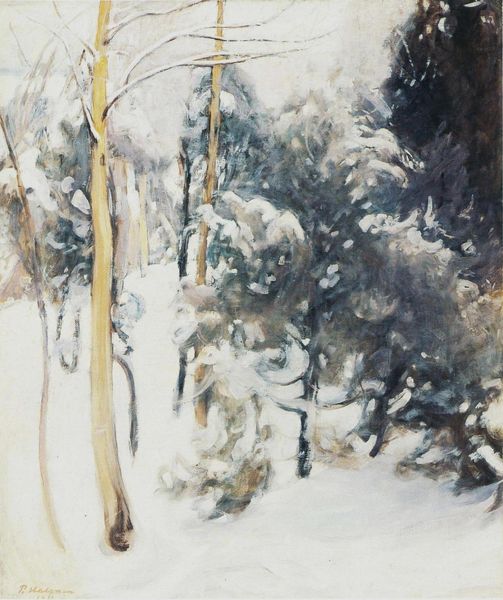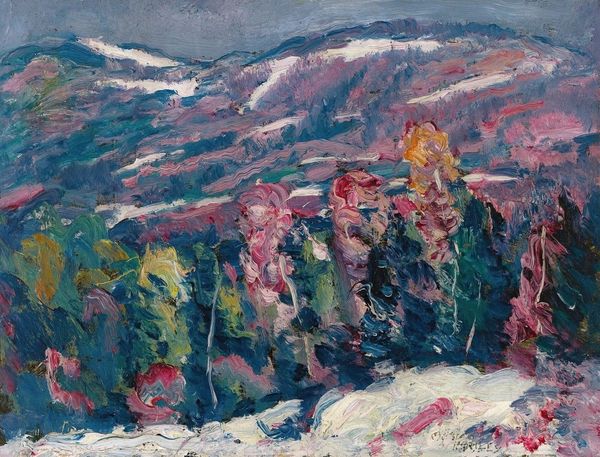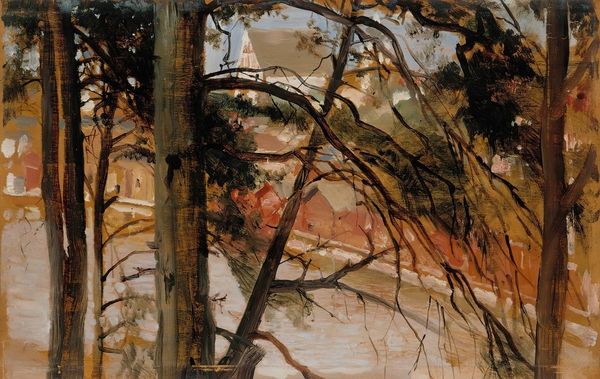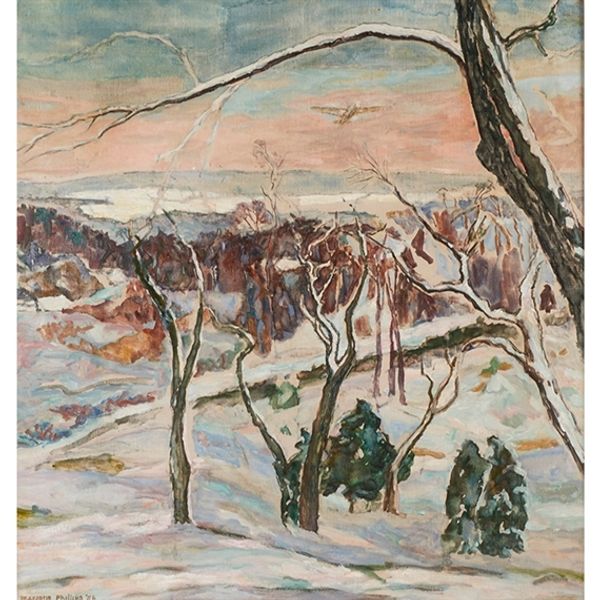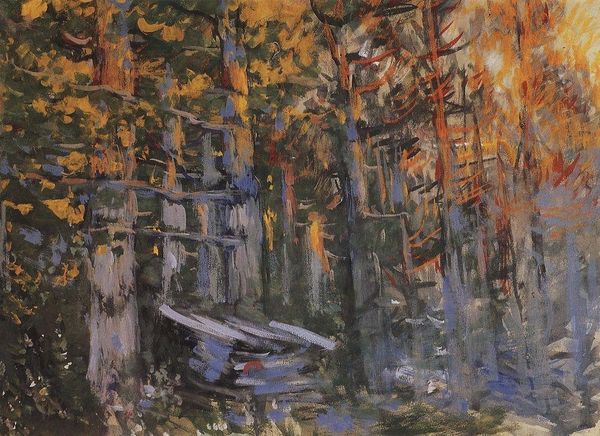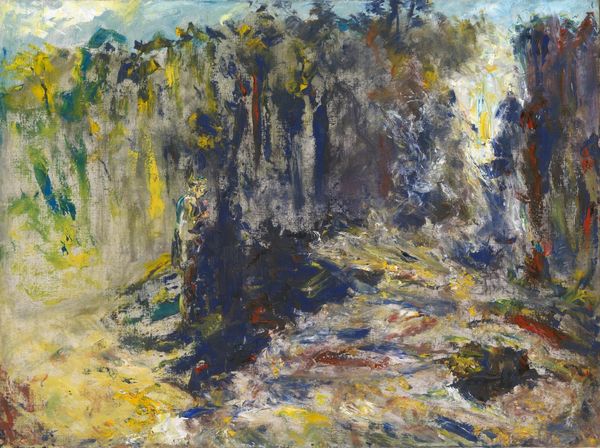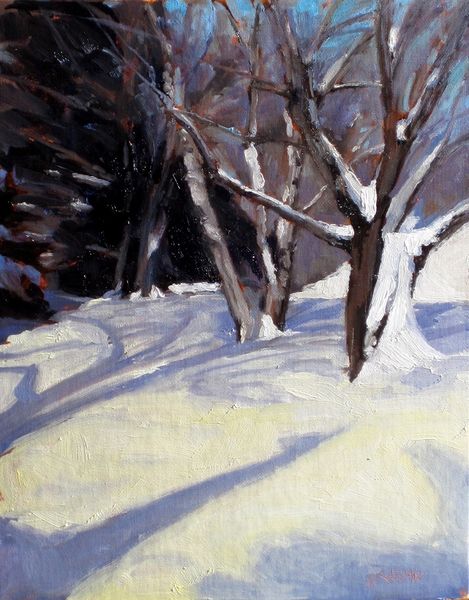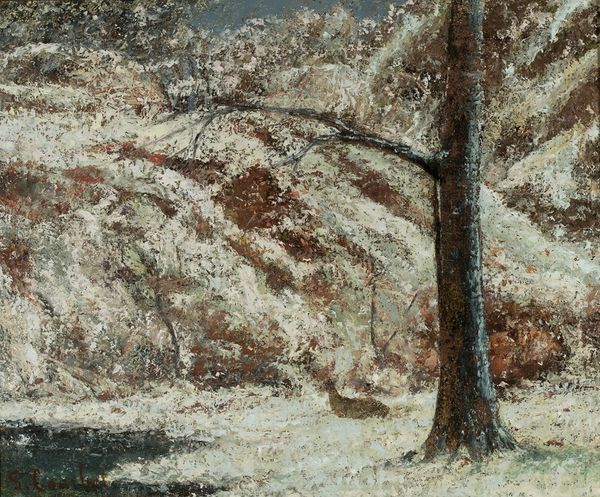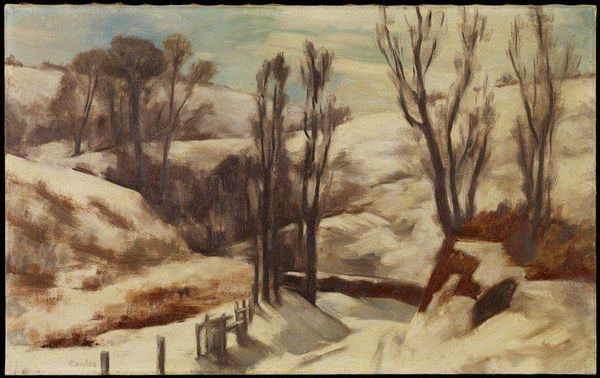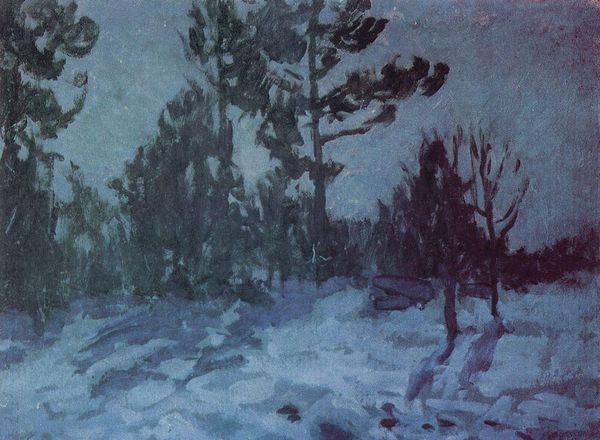
painting, oil-paint
#
portrait
#
painting
#
oil-paint
#
landscape
#
german-expressionism
#
oil painting
#
expressionism
#
modernism
#
expressionist
#
realism
Copyright: Public Domain: Artvee
Curator: Lovis Corinth painted "Der Herzogstand Am Walchensee Im Schnee," or "The Herzogstand on Lake Walchen in the Snow," in 1922, showcasing the wintry German landscape. It’s done in oil paint. Editor: Brrr, I feel chilled just looking at it! The impasto is so thick, it looks like the snow is literally leaping off the canvas. It’s…almost aggressively textured. Curator: The application of the paint is undoubtedly expressive. Corinth uses visible brushstrokes and a fairly muted palette. Consider the composition: the eye is drawn upward through the diagonal of the snow-covered slope, past the stark verticals of the trees. Editor: I'm struck by the materiality itself. Think about the artist, out in the elements, battling the cold to capture this scene. You can feel the physical labor in every smear and dab of paint. It brings into sharp relief the kind of environment a landscape painter has to put themself into, as much as they have to form the technical skills to translate it all. Curator: That's a great point. Expressionism often seeks to convey an inner emotional state. Here, we can sense a kind of struggle against the elements, rendered in the frantic energy of the brushwork. It becomes a symbolic landscape rather than a mimetic representation. The formal elements underscore a mood of bleak isolation. Editor: Isolation and perhaps even the difficulty and hardship present within production, yes. Look how Corinth isn't interested in the idyllic: he wants to confront us with the effort of place and how demanding land can truly be on all our resources. The context is Germany struggling in the 20s and I don't know how to remove the landscape here from also becoming a document of the German peoples' lives and place in that society, given the resources and challenges of that particular time and social order. Curator: Yes, this artwork certainly prompts reflection on form and materiality. Corinth uses the formal aspects to their fullest. Editor: I concur. There is nothing so beautiful that it obscures the making. The viewer never truly is taken far from recognizing the human production element.
Comments
No comments
Be the first to comment and join the conversation on the ultimate creative platform.
